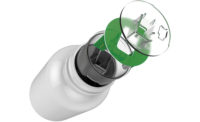Track & Trace
The Evolution of Serialization and the Role of Packaging

MM Packaging invests in many different printing technologies for serialization, allowing perfect grading and quality, even in more intricate code styles such as those used in China or Russia. Courtesy of MM Packaging
It’s clear that the packaging industry has a central role to play in supporting the long-term success of the pharmaceutical and health sectors. Technological developments have allowed packaging to go beyond simply containing products securely, to support areas such as patient safety and compliance in new ways. One of the most transformative journeys has been that of serialization.
Serialization, the process of assigning each individual unit of packaging a unique identifier, has come a long way from its early use to the stringent global regulations we see today. Today, it’s a vital tool in ensuring the products that reach patients are safe and validated, but there is still further work to do in making serialization a streamlined part of packaging workflows.
The principles behind coding began with the market realization that to increase security, particularly in a world where counterfeiting is on the rise, supply chain integrity had to be central. The World Health Organization reports that in some countries, as much as 10% of drug products on the market may be illicit or fake, putting patient safety in jeopardy. The problem also brings major challenges in commerce. The European Intellectual Property Office (EUIPO) reports that in the EU alone, counterfeit medicines cost the pharmaceutical industry more than €10 billion annually, representing the loss of almost 38,000 pharmaceutical jobs.
In response, serialization began as simple barcoding on single drug units. However, today’s data systems are much more sophisticated, capable of transferring a great deal more information. With serialization systems in place, drug products are continually collecting data from the point of manufacturing to the dispenser. The growth of this technology has created new needs for standardization, so we have seen initiatives such as GS1 coding standards become more prevalent.
The rise of serialization has been accelerated by key regulation changes that have shaped its implementation around the globe. The European Union Falsified Medicines Directive (EU FMD) and the US Drug Supply Chain Security Act (DSCSA) are prime examples.
The EU FMD, effective since February 2019, mandates the verification of prescription medicines at the point of dispensing, with the aim of combatting counterfeit drugs and protecting the safety of patients. Each medicine pack is required to have an identifier encoded in a 2D data matrix barcode, with the data uploaded to a European repository by the manufacturer.
Similarly, the DSCSA, enacted in 2013 and set to be fully enforced by November 2024 following a year-long ‘stabilization period’, established a standardized national system for tracking prescription drugs through the supply chain in the US, which also requires a 2D data matrix barcode. These codes must contain a variety of information, include National Drug Code (NDC), expiration date and serial numbers. Further afield, countries such as China, South Korea and Russia have also introduced specific serialization regulations, reflecting a global commitment to securing pharmaceutical supply chains.
With regulations in place, pharmaceutical companies have heavily invested in serialization technologies to comply with these mandates. This investment is not just about meeting regulatory requirements; it’s about transforming how medicines are tracked and traced, ensuring authenticity at every single stage.
As pharma packaging suppliers, we have a crucial role to play in supporting patient safety and to do that, we must effectively anticipate changing customer needs. In today’s market, our collective focus needs to be on robust, fail-safe serialization solutions that ensure every unit of medication can be tracked and verified throughout its journey from production to patient. Alongside in-depth knowledge of the market, this requires complete commitment to innovation, quality and precision, as well as investment in the latest serialization and coding technologies.
An integrated and in-line approach to serialization within the packaging development and production process not only enhances efficiency but also provides greater control over the entire supply chain. In-house serialization means that pharma packaging suppliers can ensure faster turnaround times, reduce the risk of errors, and offer more agile responses to changing market demands. This agility is crucial in today’s dynamic pharmaceutical market, where regulations, technologies, and consumer needs are continually evolving.
At MM Packaging, we show the power of agility and expertise in action, directly addressing common pain points for our pharma customers. For example, one problem could be a pharma business not getting the correct format or type of serialization for the market they’re operating in. To support our customers, we invest in many different printing technologies, allowing perfect grading and quality, even in more intricate code styles, such as those used in China or Russia. What’s more, with our experience and capabilities, we are able to offer serialization in large cases or unusual sizes, which gives us the ability to respond to flexible customer needs and deliver an outstanding finished product.
The key to success clearly lies in packaging partners providing comprehensive serialization services in house, helping pharmaceutical companies to stay ahead of regulatory changes, quickly adapt to new requirements, and maintain the highest standards of safety and quality.
Learn more about MM Packaging and its activities.
Looking for a reprint of this article?
From high-res PDFs to custom plaques, order your copy today!






